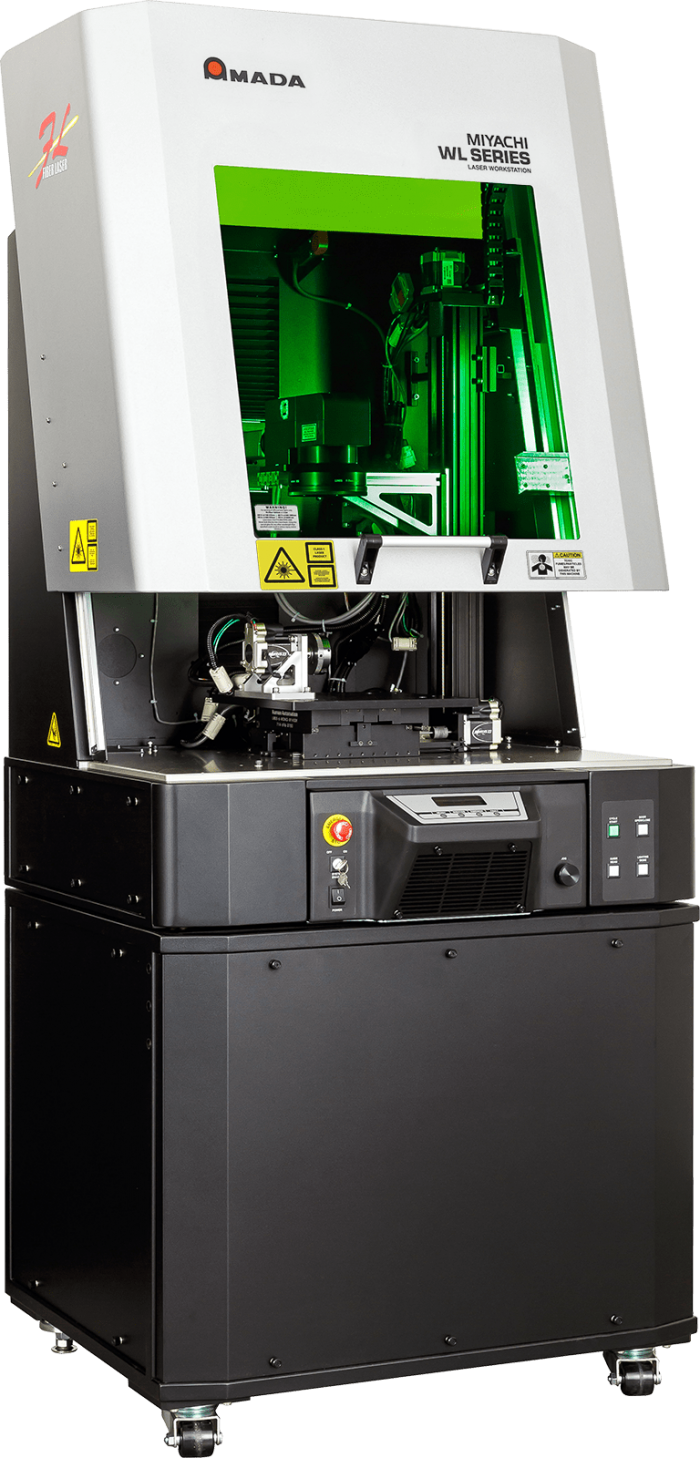Industrial process success is most commonly defined by two parameters: production rate and yield. In the simplest terms, make as much as you can in the shortest amount of time. Understanding both the process requirements and production environment allows companies to optimize their production rates, resulting in lower cost per part and higher profit.
A number of factors influence process success, including material selection, equipment capability and process requirements. Optimization often takes several rounds of testing and improvement. However, the production environment, such as personnel, budget and climate, might limit the options for equipment selection.
Understanding process requirements – and the production facility – aids in the design of robust systems for production that will increase the production rate and yield. This article focuses on laser welding, laser cutting and laser marking processes and discuss equipment selection for the same.
Understanding the Process
Systematically defining each process is critical: There is a difference between conducting a first level study that achieves success in an application laboratory and a fully developed process that is repeatable and can deliver high yield with consistency. If not defined methodically, the process may fail.
Amada Miyachi America uses a define – design – deliver methodology in its technical center application laboratories that seeks to define not only the equipment but also the best process through clear system design. This methodology recognizes that laser process knowledge is as important to success as the laser source itself, and applies the same level of engineering rigor to the design of the process as the equipment.
As part of its methodology, Amada Miyachi America conducts in-depth conversations with the customer on their overall goal for the particular project/process. Initial discussions may last an hour or two, followed by one or more visits during which the application development team and customer discuss how to best achieve the customer’s goals. These initial meetings center on a few core questions. Engineers considering laser equipment for their process should consider these carefully in order to ensure an optimal outcome for productivity.
Key Questions for Optimizing Laser Processes
The key questions in determining the correct process and equipment for an application focus on customer parameters including the material and plating to be used, weld geometry, part shape and size, desired penetration depth and weld target time. Information on the desired characteristics of the weld, such as pull, torque, peel and whether hermeticity is required also informs this step.
Customers should consider:
- What are your production goals? (Target success rates?)
- What is your current welding process?
- What is the cycle time?
- Are you doing the process now or is it planned for the future?
- If you are doing the process now, why are you looking to change? (e.g. is current system too slow? Not enough penetration?)
- Is tooling needed?
- What is the timeline of project?
- What is the budget for this project?
Of course, there are a host of questions to consider beyond the basics. For instance, the climate of a factory could impact the range of potential optimal solutions. For example, some lasers may not perform as expected in a facility located near the equator that lacks air conditioning.
As this systematic consideration of the job continues, the question of priorities often emerges. Note that sometimes this conversation reveals that a laser welding solution is not ideal for an application at all. Experts may determine that the customer’s interest in a faster cycle time requires transitioning to laser welding but it may become clear that they lack the budget to support the new equipment. In this case, application specialists may develop a robust resistance welding process and help them position for a future transition to laser welding. By thoroughly addressing a battery of questions, expert application engineers can effectively triangulate the best solution for a specific customer.
Production Efficiency Factors: Material, Equipment, Process
From these conversations surrounding goals and parameters we can begin formulating an ideal solution for a particular application. The basic factors that impact productivity are materials, equipment and process. Often, reworking just one of these elements enables a customer to reach production goals.
While materials are often predefined by customer needs, they may not always be optimal for welding. Experienced application engineers, however, can help ensure success. For example, one customer’s production line employed a mechanical crimping and welding technology to join brass wires. They wanted to move from resistance welding to laser welding – but brass contains too much zinc to be effectively laser welded. In this case, the solution was to replace brass with bronze or pure copper. We assisted the customer in developing a new production line that could embrace the speed and precision of laser welding.
Equipment selection is another area in which application knowledge is vital. Unlike resistance welding, laser welding is a noncontact process and doesn’t utilize electrodes to hold parts in place, so customers must develop part fixturing to hold parts in place during welding. Application experts can suggest a range of standard tooling or help design custom tooling for manual, pneumatic or servo processes that enable customers to make the transition to laser welding.
Process, too, can be revised to unlock production potential. In some factories, customers seek to perform a butt weld to join two pieces with beveled or round edges so the parts will not be sharp. This process, though, can diminish the likelihood of a successful laser weld. Two pieces with rounded corners pushed flush to each other will meet below the surface, with no metal in the area between parts. This lack of material can make it impossible for a laser to effectively melt enough metal to create a weld of decent strength, so a process that includes rounding or beveling edges that must then be welded may prove less than ideal. In this case, application experts might advise against welding rounded corners, and instead implement a process in which operators can round off corners after the weld has been completed.

Defining the Solution
After discussing the customer’s goals and parameters, a systematic approach to the development of an ideal process leads to sampling. Application engineers process customer samples using similar equipment and settings to demonstrate possible outcomes, sending them to the customer for review. Customers may find the first pass to be just what they are looking for, or not. Whether the sample reveals the desire for a faster cycle time or more depth penetration, sample processing is an essential step in determining the best process.
Upon determining that samples meet desired parameters, engineers design a preferred solution or a short list of potential fits. For laser welding, available options include both pulsed Nd:YAG and fiber lasers. These technologies are largely capable of the same performance but differ with regard to serviceability. A pulsed Nd:YAG laser is field serviceable, whereas a fiber laser must be sent back to the factory for repair and servicing. In the marking area, several units can do the same job but there are fine distinctions among them; selection is based on process-specific requirements.
The design of the laser equipment itself centers on three elements: the laser, beam deliver and motion. Once an Nd:YAG or fiber laser is selected, the delivery mechanism is developed. Fiber delivery often calls for a focus head, which can be set up in a variety of configurations. Once the laser beam has been delivered to the part, motion is required to enable the beam to contact the part at multiple spot weld sites or along seams. Lighting or vision capabilities to identify laser location on a part can provide critical functionality for this phase of the process. Experts may add cover gas as well. The specifics of these mechanisms are closely linked to the intended use of the laser. For example, marking applications may include bar code scanners.
Experience understanding the complexities of certain industries means our application engineers can quickly factor in industry-specific requirements and testing requirements. Amada Miyachi America’s decades of experience with the automotive and medical industries improve both the speed of solution development and the quality. At Amada Miyachi America’s application laboratories, a high proportion – 80% to 90% – of sample processing projects involve work that bears a high degree of similarity to other projects that application experts have worked on in the past.
One example is the welding of battery packs, specifically cylindrical lithium-ion rechargeable or AA batteries. The tab material has not changed, but many manufacturers are now building battery packs into hand held power tools, electrical vehicles, and lawn mowers. These applications are similar enough to other successful existing solutions that we can frequently speed up process development.
Understand the Process to Achieve Productivity
With a deep understanding of laser welding, cutting and marking processes, Amada Miyachi America application engineers help customers develop a solution, but it is important that customers understand the elements of an effective process as well. Whether transferring an existing production line to a new technology or building a new line, look for a partner that can provide part design, application knowledge, a machine tailored to the process, and a breadth of light source selection, as well as pre- and post-sale equipment and application support. In collaboration with laser experts, engineers can optimize production rates and yields by considering the multiple facts of their application, comparing their application to other proven process designs, and taking advantage of opportunities to hone production by changing equipment, process or materials.
Related Glossary Terms
- arithmetic average ( AA)
arithmetic average ( AA)
The mathematical expression denoting one of several parameters that describe surface texture (same as average roughness Ra). Average roughness is the arithmetic average height deviation of the measured surface profile from the profile centerline. See surface texture.
- centers
centers
Cone-shaped pins that support a workpiece by one or two ends during machining. The centers fit into holes drilled in the workpiece ends. Centers that turn with the workpiece are called “live” centers; those that do not are called “dead” centers.

